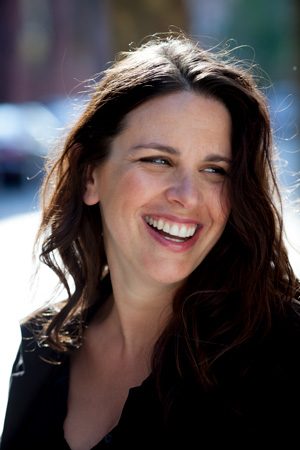The origin story of the vibrator gets a hilarious new telling in, Hysteria
Hysteria, a 19th century affliction that explains the unwanted behaviors of women according to men: Unhappiness, disobedience, restlessness, the desire for too much, or too little sex and even (gasp) the desire to vote. Fortunately, there was a cure for hysteria: clitoral stimulation administered by doctors.
This is the backdrop to to the hilarious and lesbian helmed film, Hysteria, a romantic comedy with a feminist foundation. Director Tanya Wexler (Finding North, Relative Evil) takes full advantage of the hilarity that ensuses when uptight Victorian society meets misunderstood female sexual pleasure. Hysteria features Curve favorite, Maggie Gyllenhaal alongside Hugh Dancy, out actor Rupert Everett and premieres May 18. We chatted with Wexler about the invention of the vibrator, lesbian directors and making her vibetastic passion project, Hysteria.
When you first heard about the story of a Victorian doctor inventing the vibrator, you said that you had to make this movie. What specifically about that story pulled you in?
It made me laugh out loud. I had really small kids at the time and I thought, ‘that’s a movie that would really make me happy!’ I think the idea of a whole group of people in such massive denial of the truth right in front of their faces was too delicious to pass up.
Superficially, Hysteria is about the invention of the vibrator. On a deeper level, what story does the film tell?
It’s a movie about what we do when we, or people around us, don’t fit into the proscribed roles society would have us play. Sometimes we medicalize and diagnose them as abnormal and try to cure them, sometimes with terrible repercussions, sometimes with hysterical ones.
In the 19th century, it would have been preposterous for women to talk openly about sex. Over 100 years later, it’s still taboo in some circles to talk openly about women’s sexuality. What was your approach to making Hysteria a film that people could take seriously and talk openly about?
I made it a comedy! There is nothing that breaks down barriers like the ability to laugh at ourselves as people.
Although placed in a historical setting, you wanted to make a modern day film. What is the modern day “hysteria” that you’re bringing awareness to through your film?
I wanted the pace and timing to appeal to a modern audience. I’m not sure I wanted the film to bring awareness to anything but how funny the human condition can be.
How much fun did you have creating Charlotte Dalrymple, Hysteria’s Victorian feminist?
I loved Charlotte from the very first minute I heard the idea for the movie. She’s kind of Katherine Hepburn, Amelia Earhart and Hermione Granger rolled into one. She is definitely who I would have wanted to be if I had lived back then!
Is there a noticeable difference working on a film with a crew made up mostly by women, and did that influence how the film was made?
The crew was noticeably more female, but by no means was it “mostly women.” It was about 30 percent women, which was a lot. People were always remarking at how many women were on the set, but it was not even half. I hope that we can get to a crew and cast that represents the larger world.
While you were filming, did you have any movies in mind that influenced the making of Hysteria?
Yes. Many. A few are: Some Like It Hot, Howard’s End, Four Weddings and a Funeral, Bringing Up Baby, Room with a View, Cold Comfort Farm and Monty Python’s: The Meaning of Life.
Who are your favorite directors?
Billy Wilder, Mike Nichols, Ridley Scott, Jane Campion and Zhang Yimou..
What are your thoughts on women directors and lesbian directors in Hollywood?
I think there aren’t enough of them. On second thought, let me ask my wife [Amy Zimmerman].
What are the top three reasons why Curve readers should stop everything they’re doing and go see Hysteria right now?
1) It’s funny. 2) Vibrators. 3) It’s REALLY funny.
